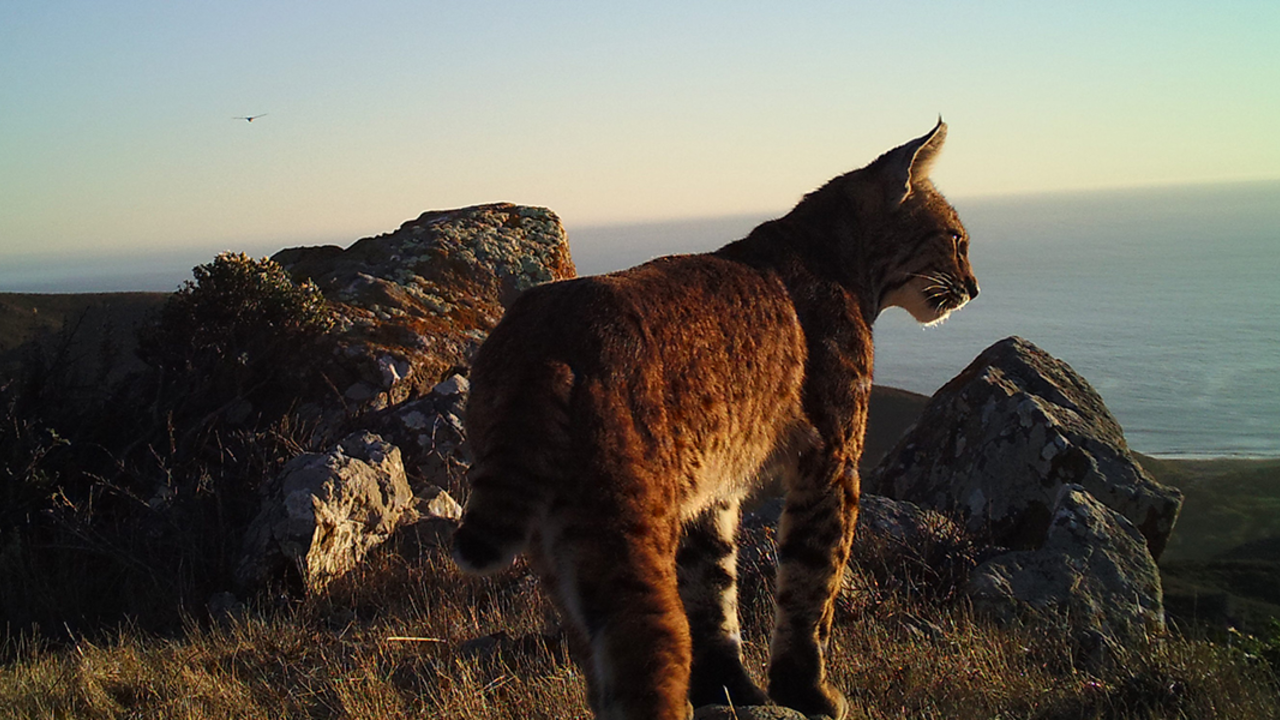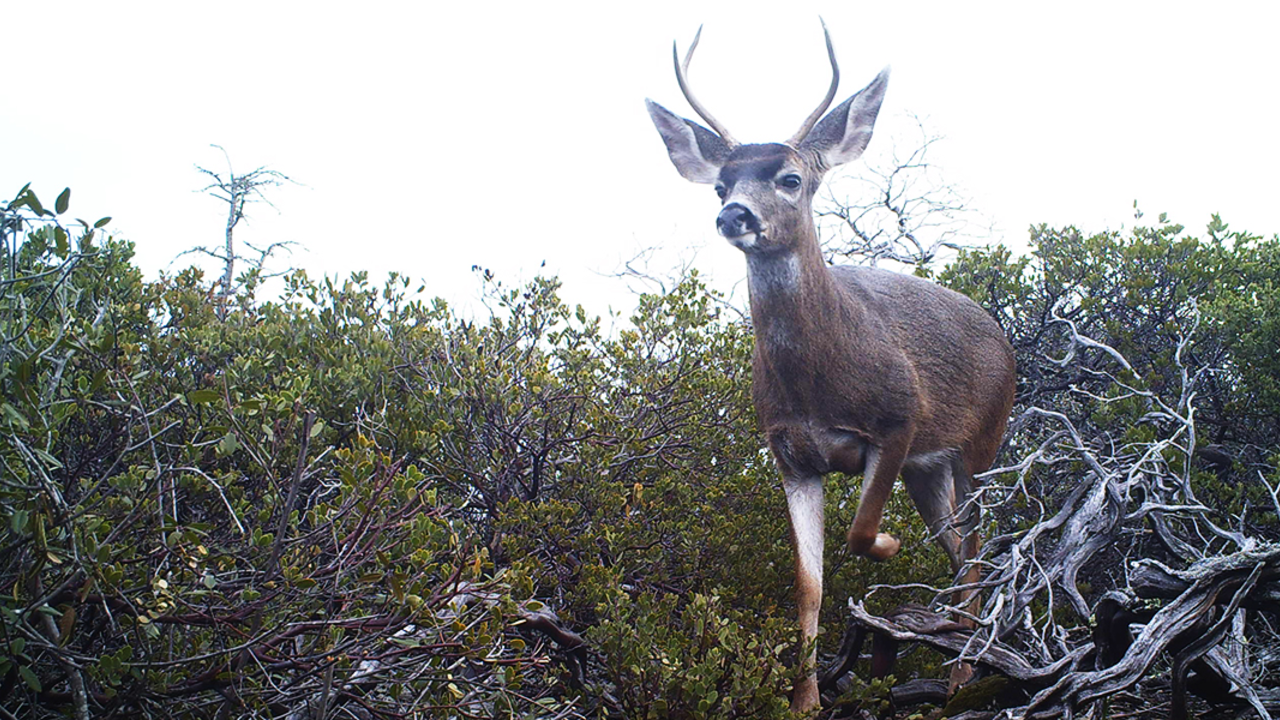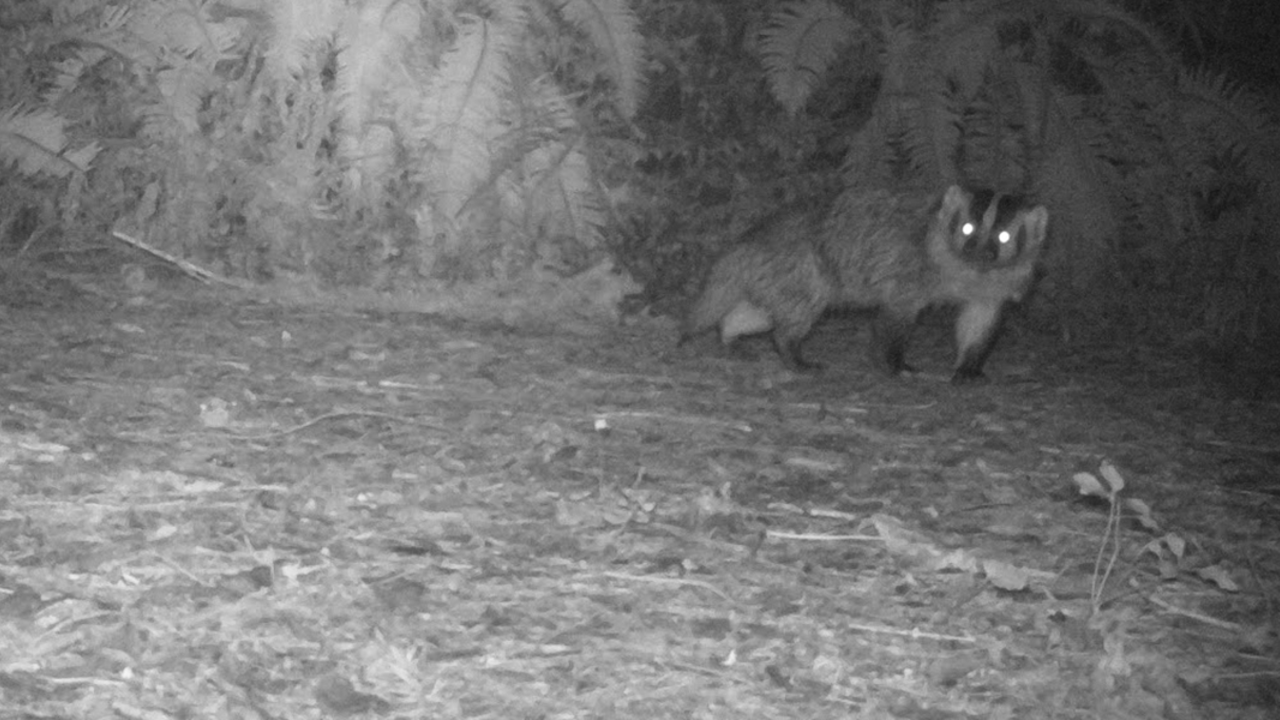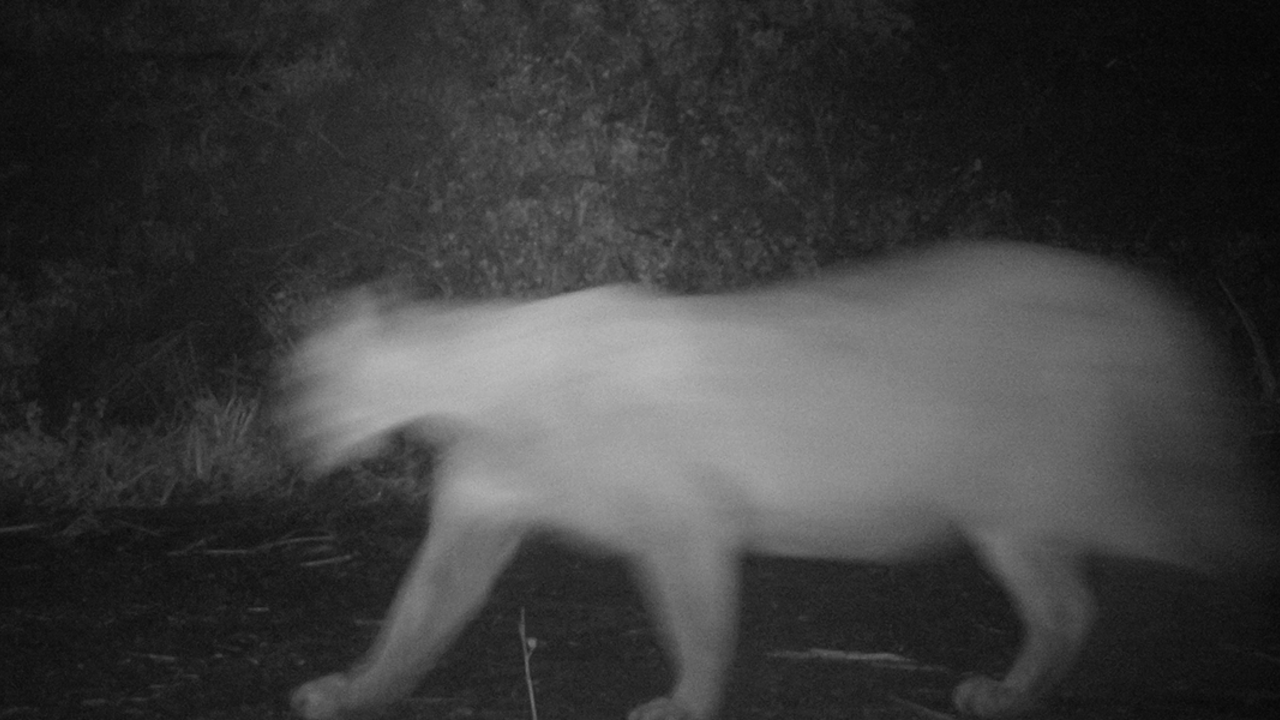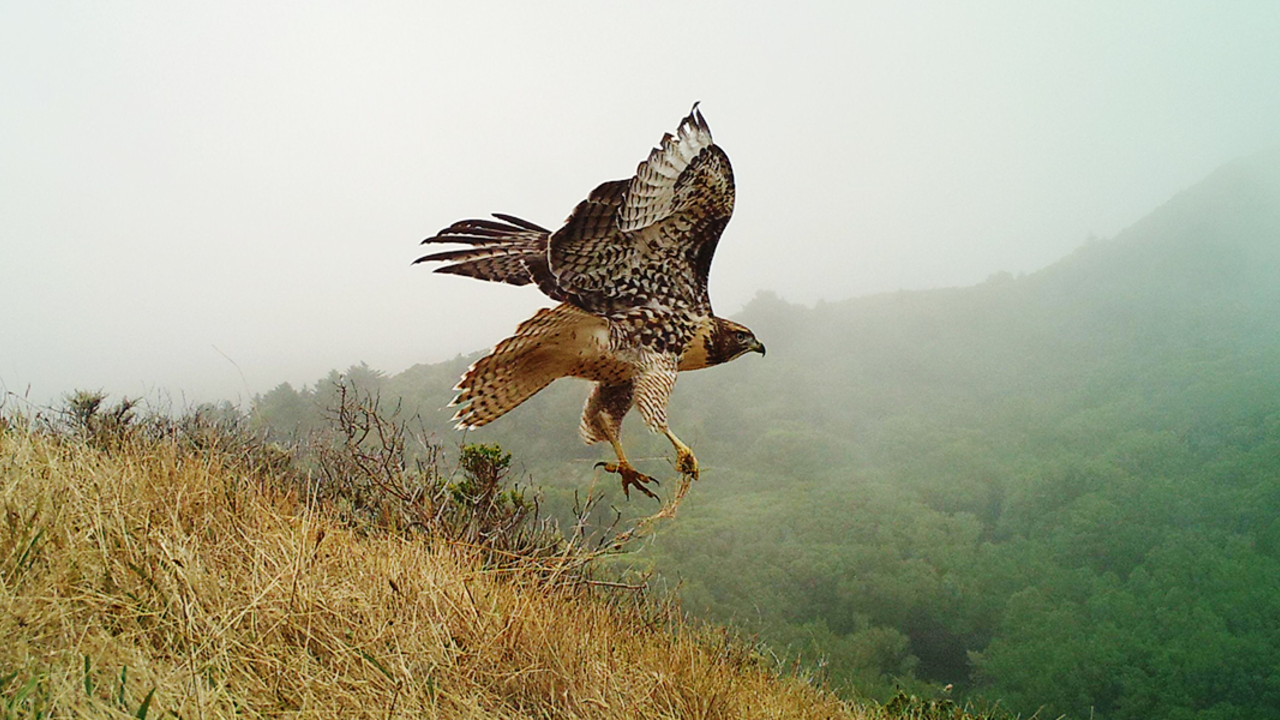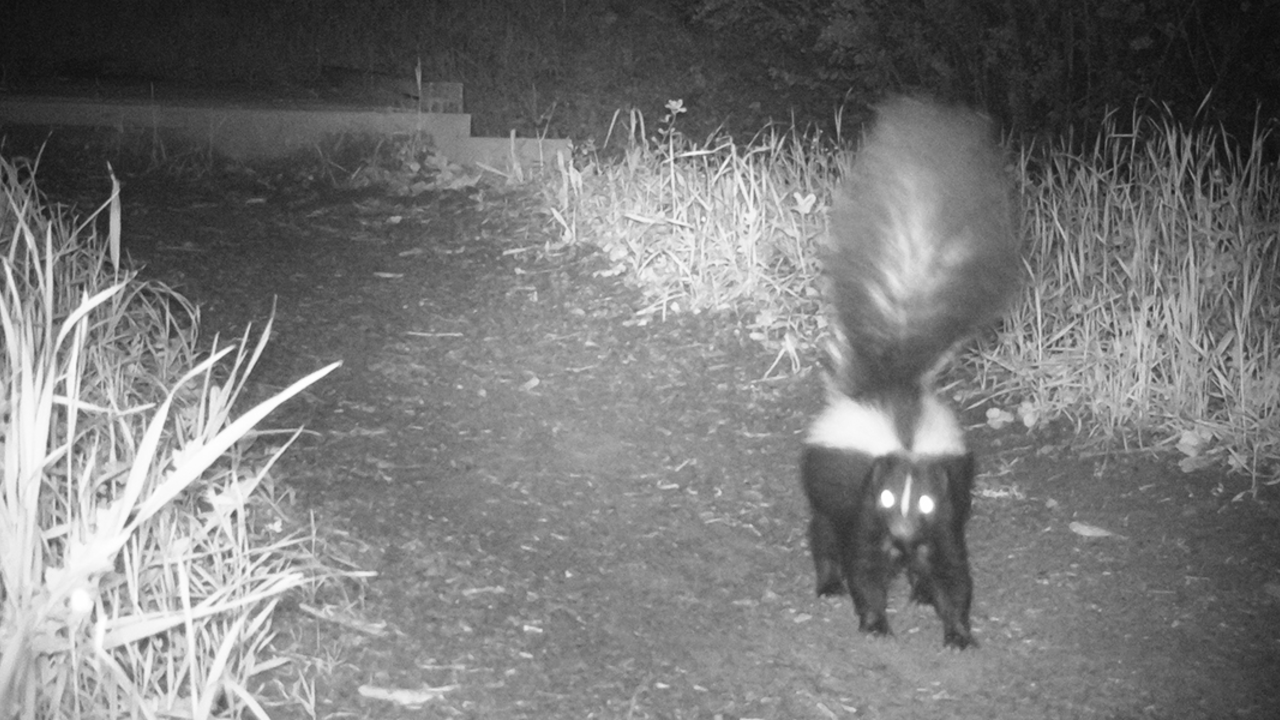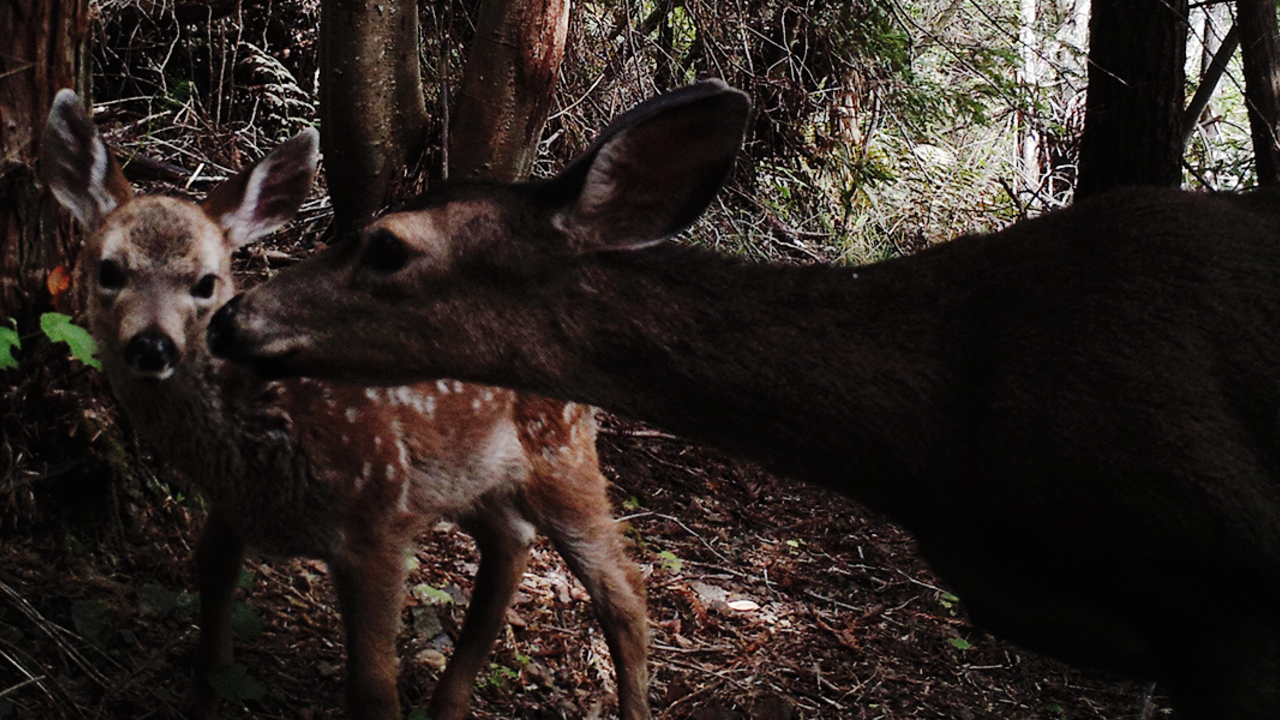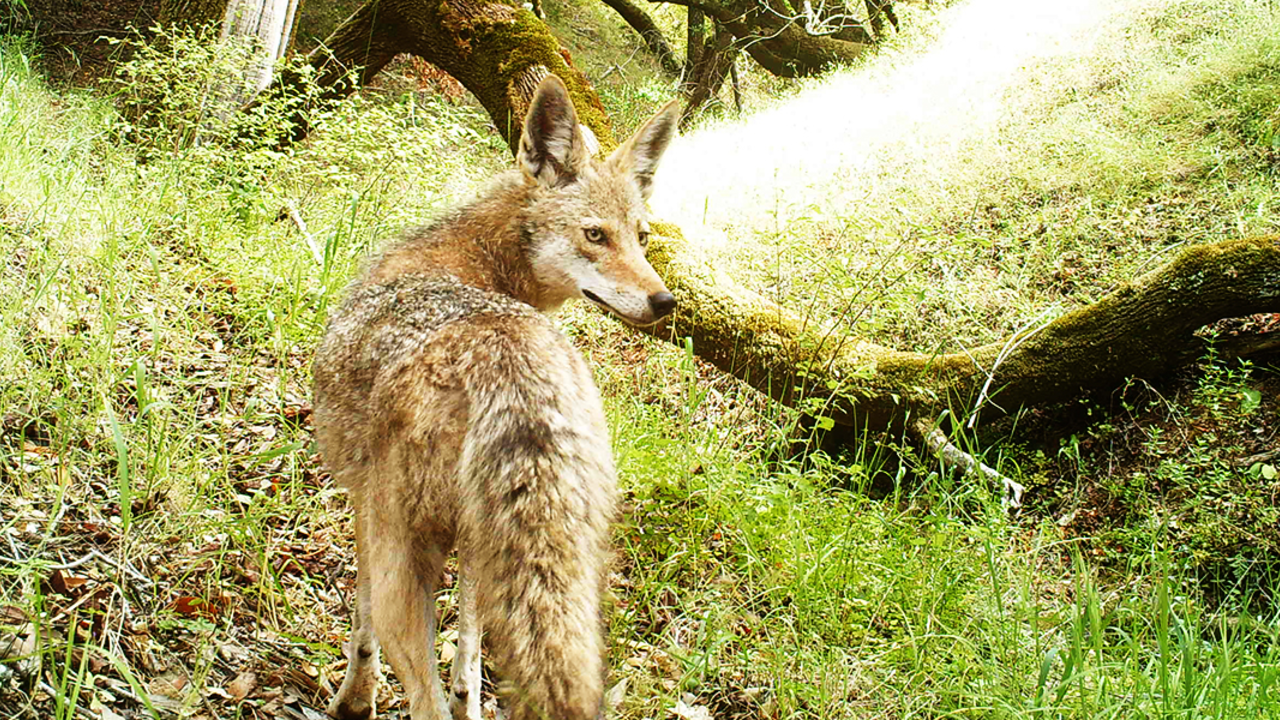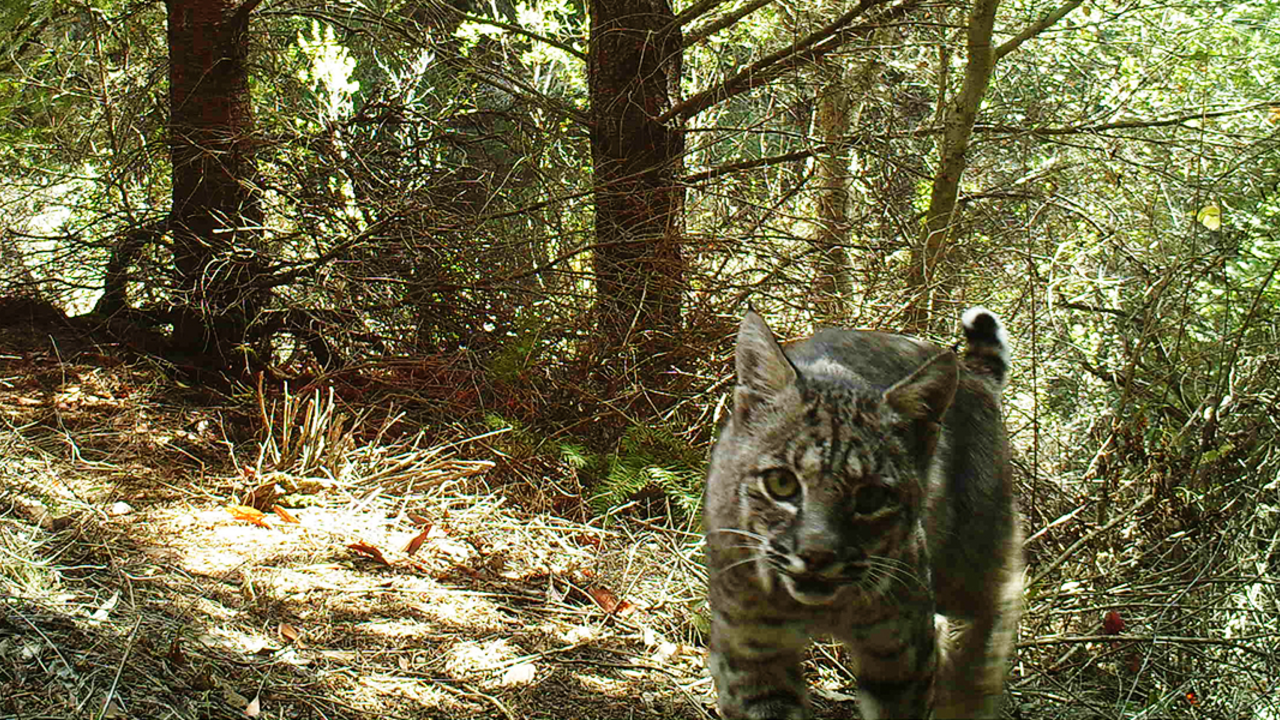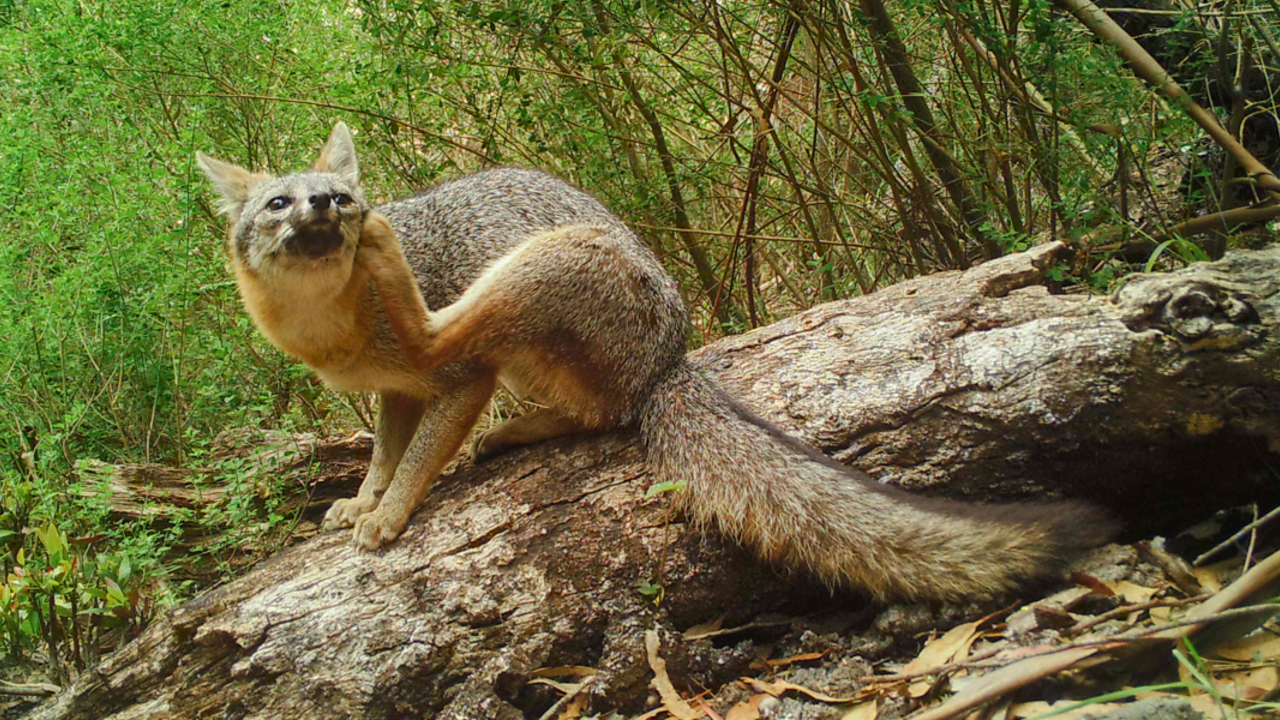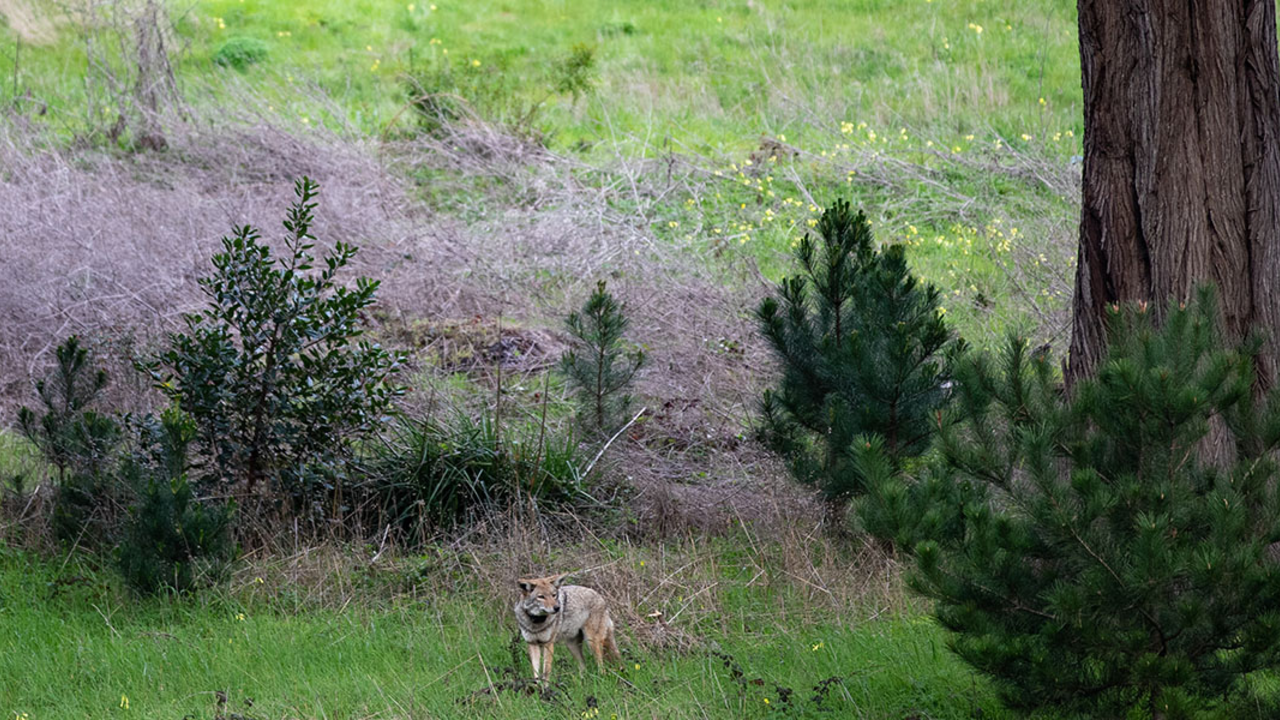On an early morning in February, a fresh cohort of volunteers for One Tam’s Marin Wildlife Watch community science program sat around a table in a darkened room, ready to see some animals. In the front of the room, an image flashed onto the projected screen. Two white orbs bordered by black stripes peered out into the night from between a pair of triangular ears. “A badger!” someone exclaimed. The next image was in color, a foggy day on Mt. Tamalpais as a magnificent Red-tailed Hawk spread its wings mid-flight, clutching hay in one foot.
These images are just two of millions from the many motion-activated cameras across Mt. Tam, helping us learn about the wildlife with which we share this landscape. Since its inception in 2014, Marin Wildlife Watch volunteers have helped process images from the cameras into data. This data helps One Tam’s scientists understand how the region’s mammal community is changing over time and how to better protect Marin’s public wildlands in the future.
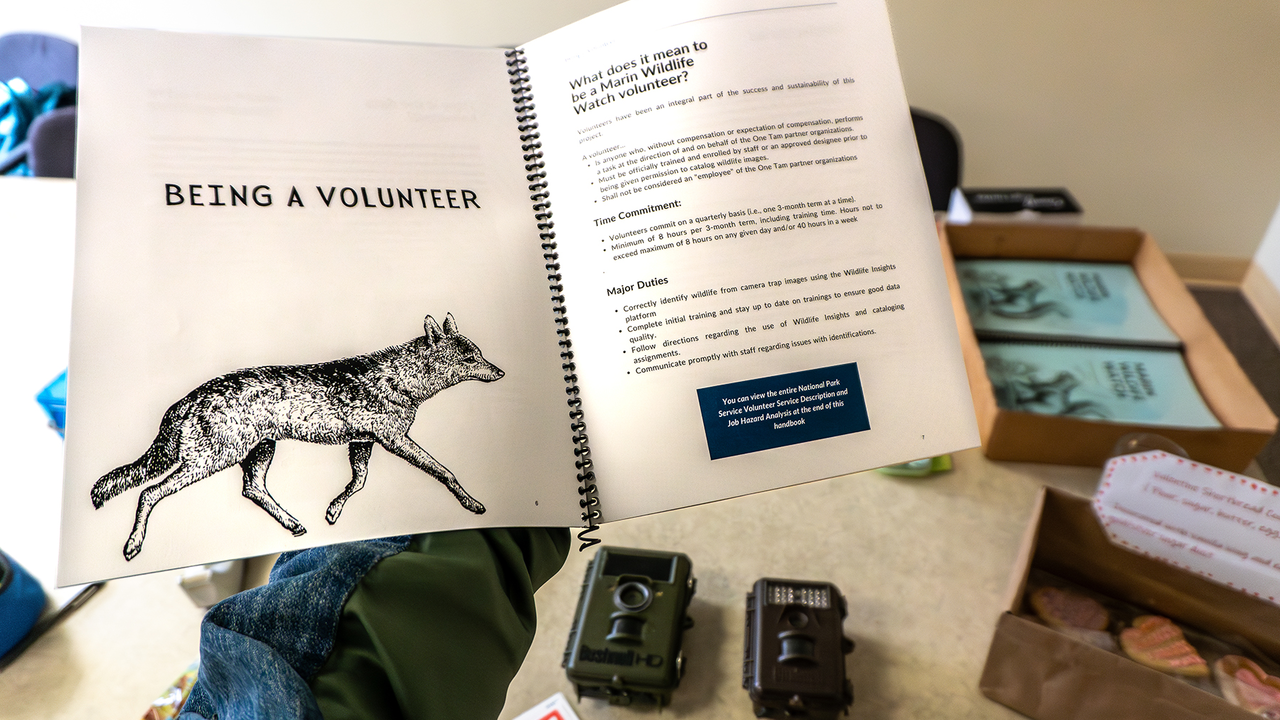
While some of the larger charismatic animals on Mt. Tam are already being monitored—the North American river otter, for example—understanding how all species are faring helps fill in the bigger picture of the mountain’s health and build up a baseline of the region’s biodiversity.
“Who the heck knows how squirrels are doing?” says Lisette Arellano. Arellano is the Parks Conservancy’s Senior Program Manager in Conservation and Community Science, working primarily with One Tam’s programs like Marin Wildlife Watch. “No one's out there being like, are the squirrels in our town okay? Are the raccoons where they should be?”
That’s where the wildlife cameras come in. Currently, 110 cameras installed all over Mt. Tam are active 24/7, snapping a picture whenever they detect motion. The cameras are mostly off-trail, so shouldn't capture human movements. But that means retrieving the photos requires intense manual labor. Four times a year, four teams of staff along with seasonal workers and interns have a two-week window to go out and check every single camera, download the photos, and make sure the gear is still working. Nature can be unpredictable—a tree could topple, shrubbery could spring up in the path they’d marked the previous season—so team members must be ready to improvise.
After retrieving photos from the field, staff upload them to an online platform called Wildlife Insights. It uses computer vision, a form of AI, to help analyze and sort photos along with environmental data from the cameras. Wildlife Insights is now used around the world to help researchers, land managers, and local communities monitor wildlife biodiversity, but it was made possible in part by Marin Wildlife Watch. Much of the data set the computer vision trained on came from Mt. Tam images that One Tam’s staff and volunteers reviewed. “In that way, we all contributed to this technology that has the potential to help a lot of other parts of the world that may be less resourced,” Arellano says.
To Arellano, Marin Wildlife Watch offers a way for community members to get closer to nature. As a naturalist, she often coaches people on how to connect with nature through their five senses. Remote sensing technology like camera traps allows us to extend those senses, like sight, to places we can’t go, either physically or to avoid disturbing the wildlife we’re trying to protect, she says.

The program also helps the community get closer to each other. Ann Maddox started volunteering with Marin Wildlife Watch six years ago after moving to the Bay Area and seeing an ad for the program, then called Marin Wildlife Picture Index, in the Marin Independent Journal. Over the years, Maddox has gained fellow nature-loving friends and a deeper knowledge and connection to Mt. Tam, she says.
“Even though Mt. Tam may be only one tiny part of our environment, it is one part of a big effort to try to save our planet and the species in it," Maddox says.
The information collected through Marin Wildlife Watch is helping tell Mt. Tam’s story through data for generations to come, Arellano says. But there’s still the simple pleasure of seeing pictures of animals doing funny things. “This project allows us to relish in that joy of connecting with the animals on their terms,” Arellano says, “while also contributing to this huge data project that’s going to be its own legacy.”
